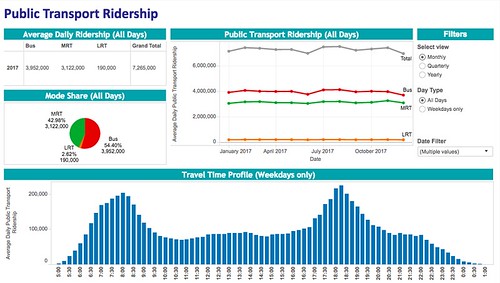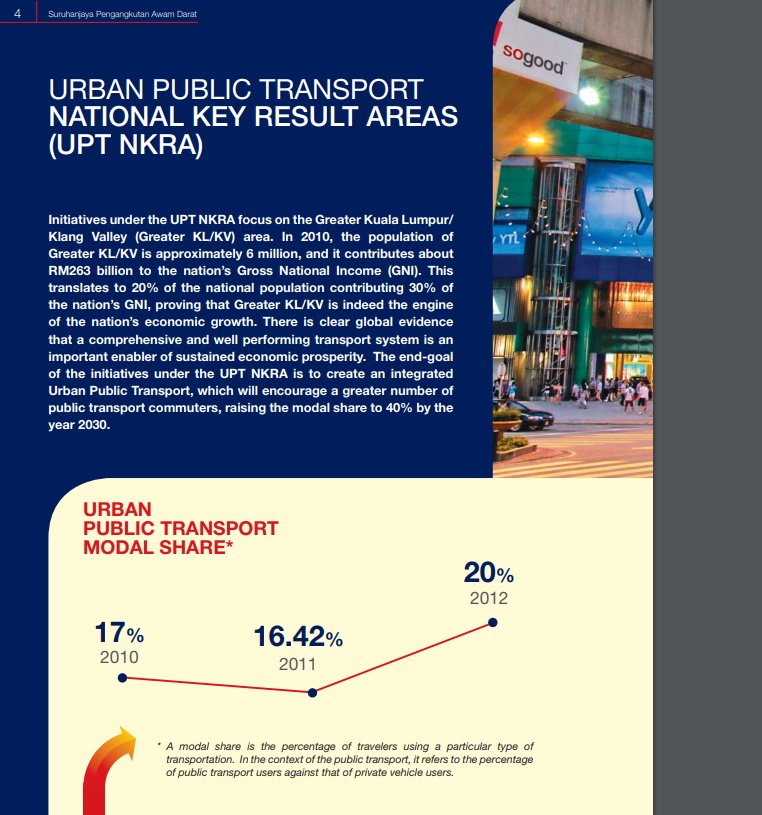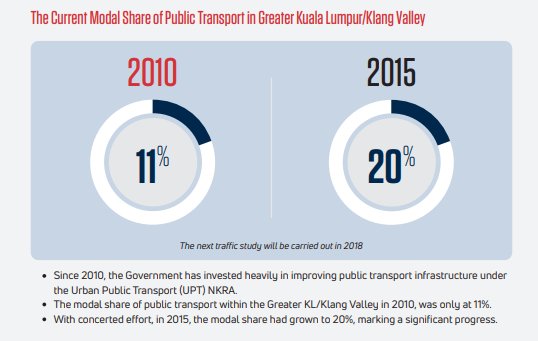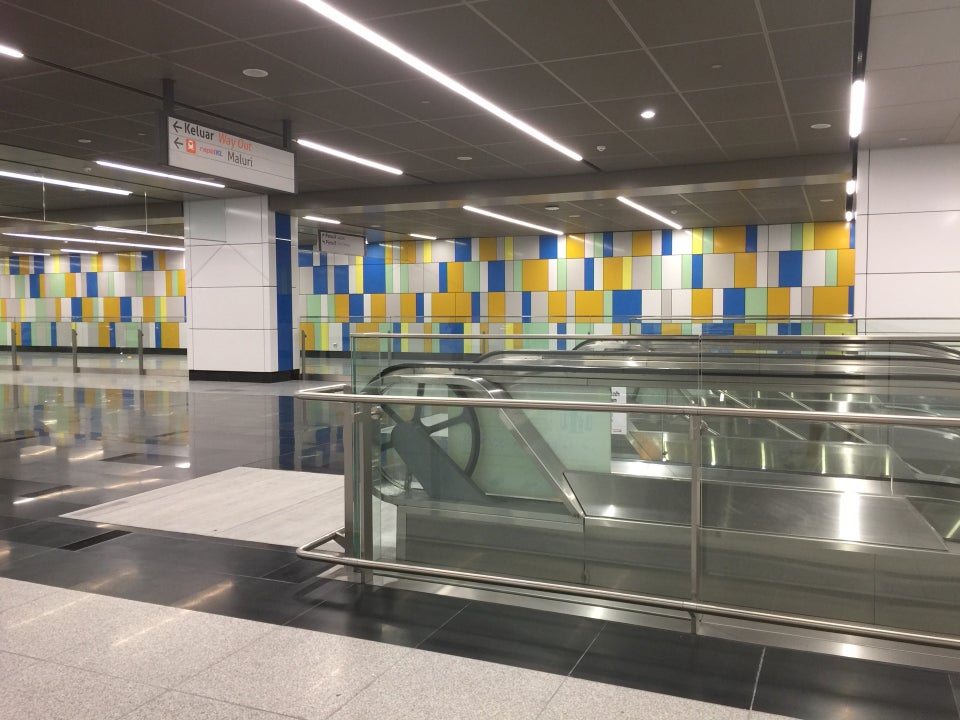As many have pointed out there has been many disputes before on the ridership figure for Klang Valley public transportation.
Land Public Transport Commission (SPAD) or Ministry of Transport has deliberately published annual ridership for Klang Valley instead of average daily ridership. We seen a change in 2017 when they tweaked the report presentation.
Inequitable figures from SPAD
A contradicting figures from a same source but different year. A clear cut distorting figures from 17% (2010) to mere 11% (2010).
While we are not "briefed" on why the revision but we have reasons demonstrate that public transport user have doubled just to justify the huge spend on MRT.
The false representation must be addressed as looming RM140 billion expenditure for MRT is worrying trend.
Average daily ridership for 2017 ¹

Kelana Jaya Line carries more than 272,000 passengers (39.3%) out of the total 694,000 recorded daily.¹
We do not have the complete statistics for rest of the lines, but the estimated share of Sungai Buloh ‒ Kajang Line is 13.7% (based on 101,024 before the full line opened to public).
The most likely of 15% share for MRT Line 1 will only see 104,109 passengers per day for the RM21 billion infrastructure project.
Ridership from January to August ²
As announced in October 2017, it has recorded a ridership in total 638,608 from January to August during the year. This total number however did not include MRT Line 1 ridership, which recorded an average daily ridership of 101,024 as it was only launched during the year.
The top three rail lines are Kelana Jaya Line carries 271,250 passengers, Ampang Line with 184,931 passengers and KTM Komuter with 103,074 passengers.
If we are to add the MRT Line 1, total ridership should come around 739,632 but for overall year in SPAD report shown is 694,057 (included MRT).
Shortfall of MRT Line 1 target ³
MRT Line 1 targeted 442k ridership on its opening year, which the current capacity doesn't permits. The forecast of MRT Line 1 ridership will increase to approx. 480k per day in 2022 once MRT Line 2 is operational.
Kelana Jaya Line current daily capacity is about 240k per day which resulted over-capacity during peak hour. Its capacity is about the same as MRT Line 1 (with their current train-sets).
Will MRT Line 1 with the 58 train-sets able to service the expected ridership? The max hourly capacity per direction of 20k is about the same as Kelana Jaya Line now.
Major concerns are huge budget overrun and actual ridership hits only 75% of forecast first year ridership.
Comparison with Singapore ⁴

While Singapore continues to be forefront in Southeast Asia with whooping 7 million ridership daily, Malaysia has to learn from them on optimising the infrastructure and realistic future plans.
Land Public Transport Commission (SPAD) or Ministry of Transport has deliberately published annual ridership for Klang Valley instead of average daily ridership. We seen a change in 2017 when they tweaked the report presentation.
Inequitable figures from SPAD
A contradicting figures from a same source but different year. A clear cut distorting figures from 17% (2010) to mere 11% (2010).
While we are not "briefed" on why the revision but we have reasons demonstrate that public transport user have doubled just to justify the huge spend on MRT.
The false representation must be addressed as looming RM140 billion expenditure for MRT is worrying trend.
Average daily ridership for 2017 ¹

Kelana Jaya Line carries more than 272,000 passengers (39.3%) out of the total 694,000 recorded daily.¹
We do not have the complete statistics for rest of the lines, but the estimated share of Sungai Buloh ‒ Kajang Line is 13.7% (based on 101,024 before the full line opened to public).
The most likely of 15% share for MRT Line 1 will only see 104,109 passengers per day for the RM21 billion infrastructure project.
Ridership from January to August ²
As announced in October 2017, it has recorded a ridership in total 638,608 from January to August during the year. This total number however did not include MRT Line 1 ridership, which recorded an average daily ridership of 101,024 as it was only launched during the year.
The top three rail lines are Kelana Jaya Line carries 271,250 passengers, Ampang Line with 184,931 passengers and KTM Komuter with 103,074 passengers.
If we are to add the MRT Line 1, total ridership should come around 739,632 but for overall year in SPAD report shown is 694,057 (included MRT).
Shortfall of MRT Line 1 target ³
MRT Line 1 targeted 442k ridership on its opening year, which the current capacity doesn't permits. The forecast of MRT Line 1 ridership will increase to approx. 480k per day in 2022 once MRT Line 2 is operational.
Kelana Jaya Line current daily capacity is about 240k per day which resulted over-capacity during peak hour. Its capacity is about the same as MRT Line 1 (with their current train-sets).
Will MRT Line 1 with the 58 train-sets able to service the expected ridership? The max hourly capacity per direction of 20k is about the same as Kelana Jaya Line now.
Major concerns are huge budget overrun and actual ridership hits only 75% of forecast first year ridership.
Comparison with Singapore ⁴

While Singapore continues to be forefront in Southeast Asia with whooping 7 million ridership daily, Malaysia has to learn from them on optimising the infrastructure and realistic future plans.
References:
SPAD Annual Review 2017 ¹
Average daily ridership Jan-Aug ²
LTA tableau ⁴









